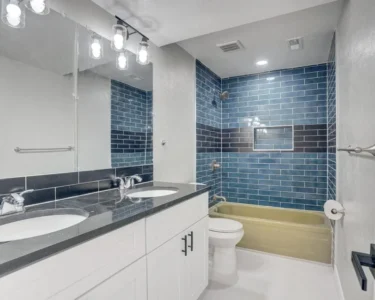When it comes to bathroom fixtures, the market offers a variety of options to suit different needs and preferences. Among these, traditional toilets and toilets with integrated bathroom urinals stand out as two distinct choices. Each has its own set of advantages and disadvantages, making them suitable for different environments and user requirements. This article provides a comprehensive comparison between traditional toilets and toilets with integrated urinals, helping you decide which option is best for your home or business.
Understanding Traditional Toilets
Traditional toilets are the most common type found in homes and public restrooms. They consist of a single unit that includes a bowl, a tank, and a flushing mechanism. Traditional toilets have been around for centuries and have undergone numerous improvements to enhance their efficiency, comfort, and design.
Advantages of Traditional Toilets:
- Widespread Availability: Traditional toilets are readily available in a wide range of styles, sizes, and price points.
- Ease of Use: They are straightforward to use, with a simple flush mechanism that most people are familiar with.
- Installation: Installing a traditional toilet is generally simpler and less costly compared to more complex systems.
- Maintenance: Maintenance and repair are typically easier due to the widespread availability of parts and service professionals.
Disadvantages of Traditional Toilets:
- Water Usage: Traditional toilets can be less water-efficient, especially older models that use more water per flush.
- Space Requirements: They require more space compared to some modern, compact designs.
- Single-Use: They serve a single purpose, which can be a limitation in environments where multiple functions are desired.
Understanding Toilets with Integrated Urinals
Toilets with integrated urinals are a relatively new innovation designed to combine the functions of a toilet and a urinal in a single unit. These fixtures aim to save space and water while offering added convenience, particularly in commercial or high-traffic environments.
Advantages of Toilets with Integrated Urinals:
- Water Efficiency: These units often come with dual-flush systems that allow users to choose a lower flush volume for liquid waste, conserving water.
- Space-Saving Design: Combining two fixtures into one can save valuable bathroom space, making them ideal for smaller bathrooms or commercial spaces.
- Convenience: The integrated urinal provides an additional option for users, which can be particularly useful in public restrooms or homes with multiple users.
- Modern Aesthetic: These units often feature sleek, contemporary designs that can enhance the overall look of a bathroom.
Disadvantages of Toilets with Integrated Urinals:
- Cost: They can be more expensive to purchase and install compared to traditional toilets.
- Complexity: The integrated systems can be more complex, potentially leading to higher maintenance and repair costs.
- User Familiarity: Some users may find the dual-purpose design unusual or confusing, particularly in residential settings.
Comparing Water Efficiency
One of the most significant differences between traditional toilets and toilets with integrated urinals for boys is water efficiency. Traditional toilets, particularly older models, can use a significant amount of water per flush. Modern traditional toilets have improved with the introduction of dual-flush systems and low-flow designs, but they still generally use more water compared to integrated units.
Toilets with integrated urinals are designed with water conservation in mind. The urinal function typically uses significantly less water than a full toilet flush. For example, a traditional toilet may use up to 1.6 gallons per flush, while the urinal function in an integrated unit may use as little as 0.5 gallons. This can lead to substantial water savings over time, particularly in high-traffic environments.
Space Considerations
Space is another crucial factor to consider. Traditional toilets require sufficient space for the bowl and tank, as well as clearance around the unit for comfortable use. In smaller bathrooms, this can be a limitation, as there may not be enough room to accommodate additional fixtures like a separate urinal.
Toilets with integrated urinals address this issue by combining two functions into a single, compact unit. This can free up space for other uses, making these units particularly valuable in small bathrooms or commercial settings where maximizing space is essential.
Installation and Maintenance
The installation process for traditional toilets is generally straightforward, with a wide range of models and styles to choose from. Plumbers and contractors are familiar with these fixtures, making installation relatively quick and cost-effective.
In contrast, toilets with integrated urinals can be more complex to install due to their dual-function design. This may require specialized knowledge and potentially higher installation costs. Maintenance and repairs can also be more involved, as the integrated systems may have more components that could require servicing.
Cost Comparison
Cost is always an important consideration when choosing bathroom fixtures. Traditional toilets are available at various price points, from budget-friendly options to high-end models. The cost of installation and maintenance is also generally lower due to the widespread availability of parts and services.
Toilets with integrated urinals tend to be more expensive upfront. The complexity of the design and the additional functionality contribute to the higher price tag. However, the long-term savings on water bills and the potential for increased property value can offset the initial investment.
User Experience
User experience is subjective and can vary based on individual preferences and needs. Traditional toilets offer a familiar and straightforward experience, which can be advantageous in residential settings where simplicity is preferred.
Toilets with integrated urinals provide additional convenience, particularly in environments with multiple users. The option to use a urinal can reduce wait times and improve overall efficiency in public restrooms. However, some users may find the design less intuitive or may prefer the traditional setup.
Conclusion
Choosing between traditional toilets and toilets with integrated urinals depends on various factors, including water efficiency, space availability, installation and maintenance costs, and user preferences. Traditional toilets offer simplicity and widespread availability, while toilets with integrated urinals provide modern convenience and potential water savings. By weighing the advantages and disadvantages of each option, you can make an informed decision that best suits your needs and enhances your bathroom experience.







